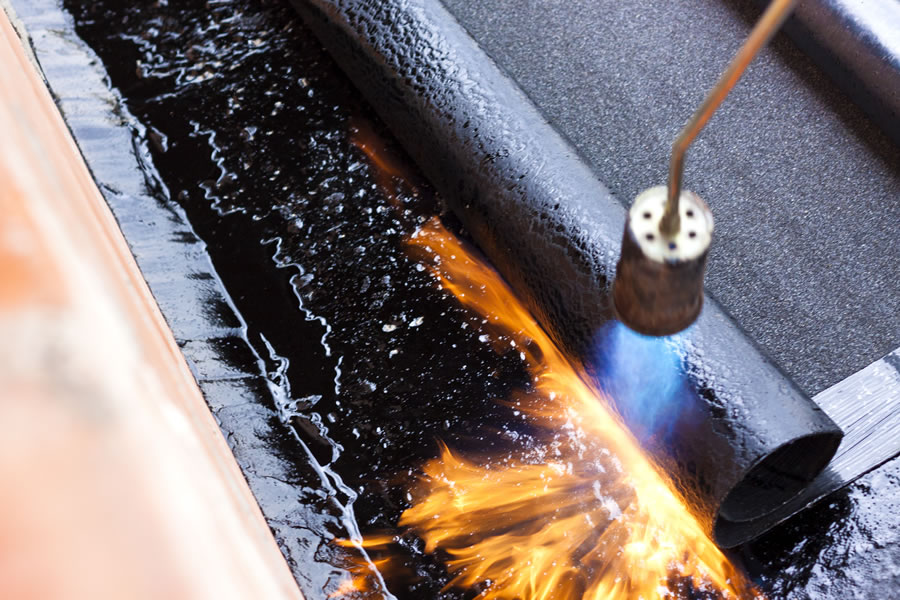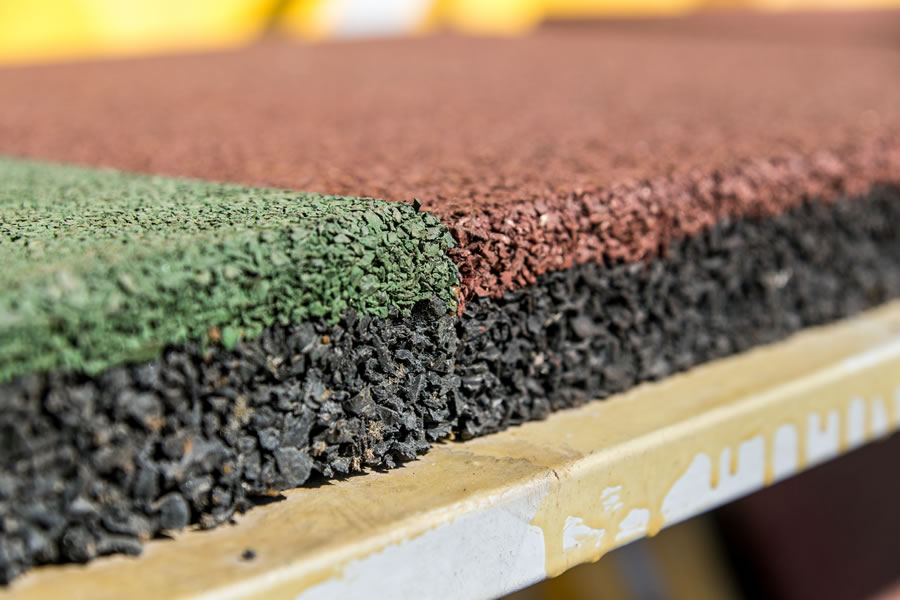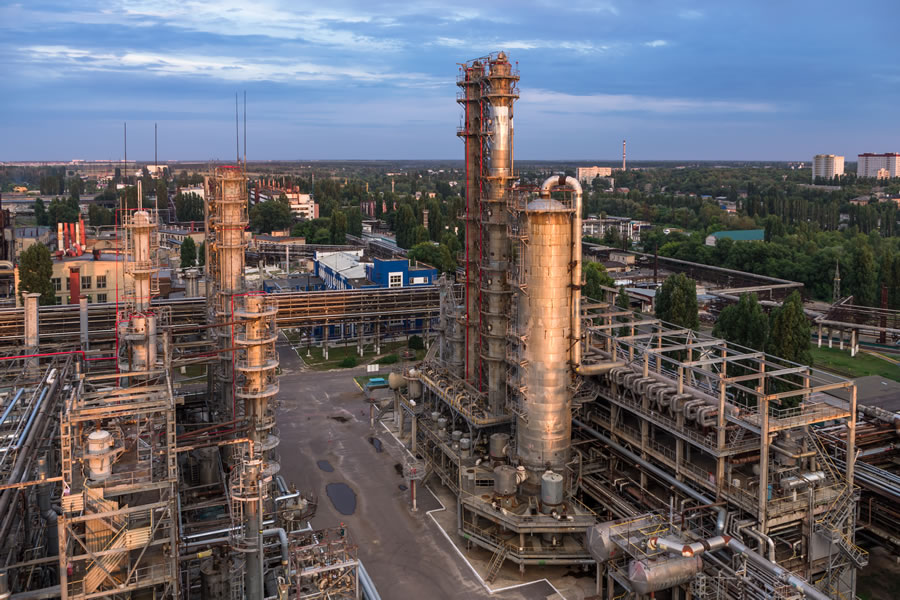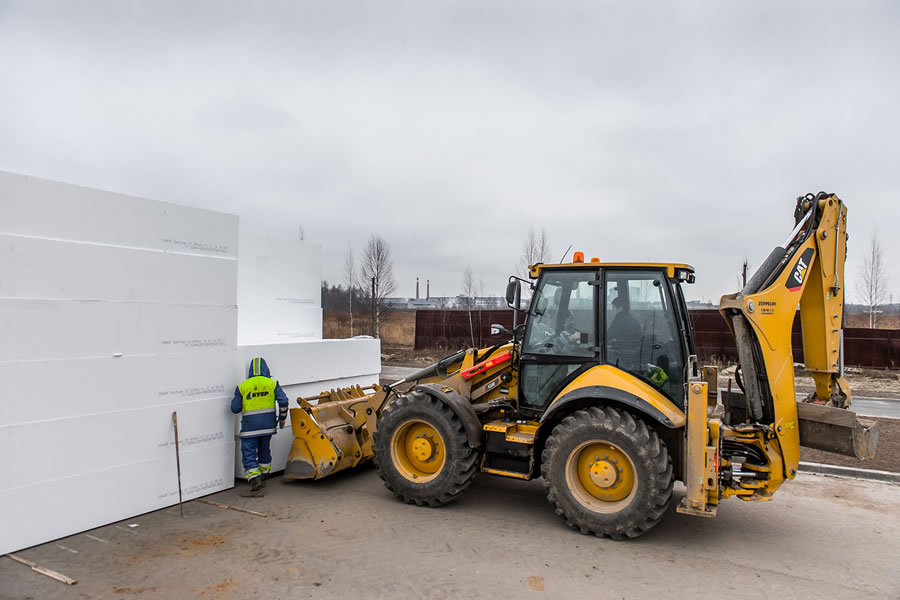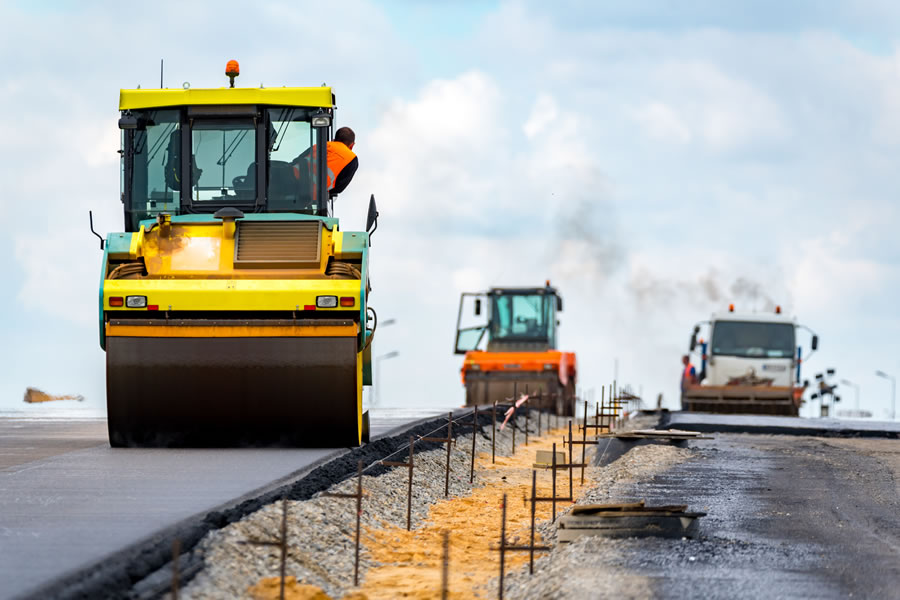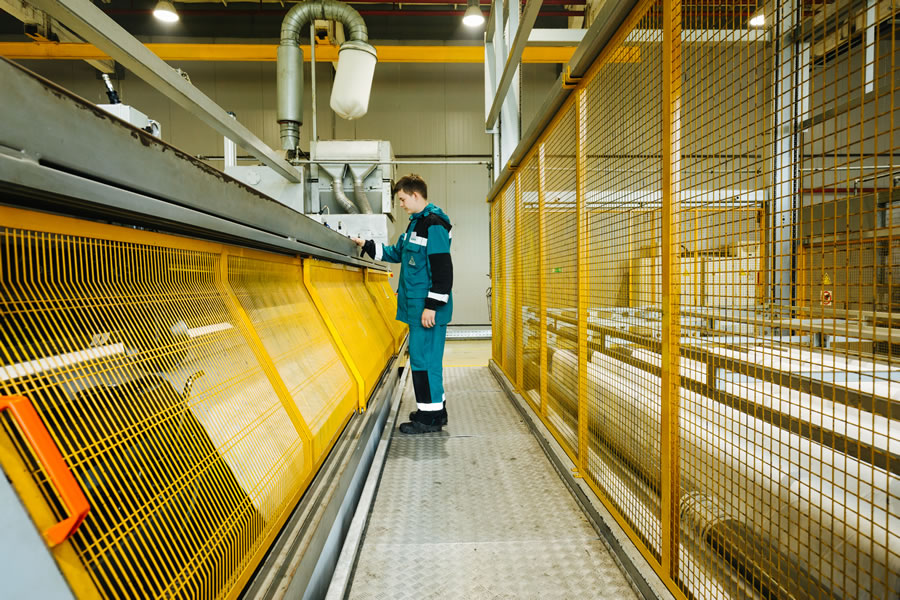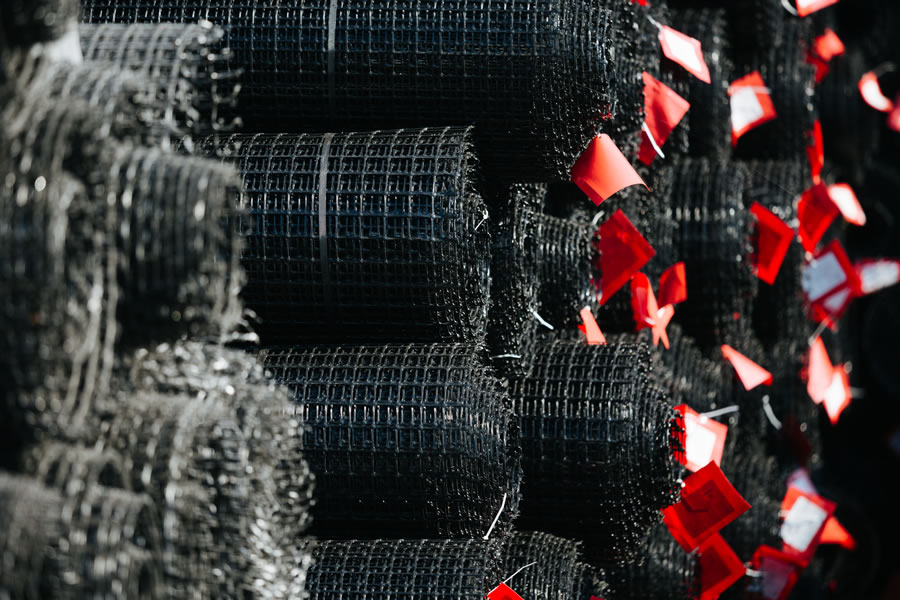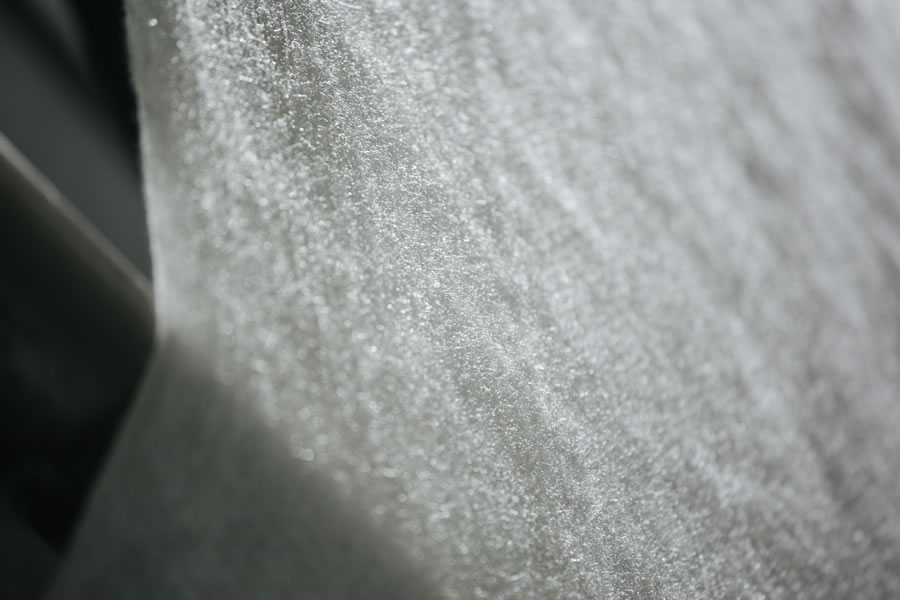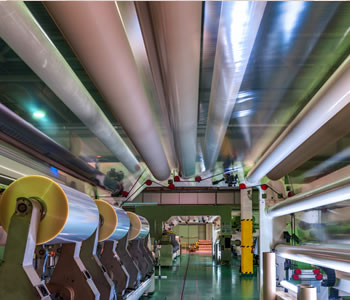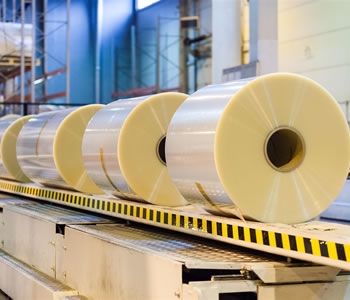Currently, over 500 innovative technologies are used for road construction and maintenance in Russia. In 2012, to put this into perspective, the number was just above 200.
Surviving the winter
One of the key issues in road construction is the quality of surface, also known as road pavement. Nothing is as prone to wear, which causes inconveniences for traffic participants and problems for operators, forcing the latter to undertake frequent repairs and incur maintenance costs.
Most of the road issues can be solved, as it turned out, by modifying road pavement bitumen, i.e. enhancing it by introducing various additives.
And that is precisely what gave the road industry an incentive to innovate and accelerated the development of new technologies to create road pavements, machinery and materials. For example, multifunctional pavements that are permeable, low-noise, able to control moisture freezing, etc.
Their developers have to deal with a variety of factors that affect pavement durability. Some of the most important ones are local climate characteristics, earth bed profile, and traffic intensity. One way or another, each of these factors affects the pace of road wear and ageing.
And that, in turn, translates into crack-susceptible surfaces in areas where temperatures tend to vary greatly throughout the year. Cracking comes as a result of serious temperature stress. The pavement cannot withstand such fluctuations and a lot of freeze-thaw cycles. As a result, in Russia, with its diverse climate zones, operating roads that were built using legacy technologies implies significant costs.
However, most of the road issues (pits, cracks, potholes, and ruts) can be solved, as it turned out, by modifying road pavement bitumen, i.e. enhancing it by introducing various additives or their compounds.
The main component of asphalt concrete petroleum bitumen will not work as is, so nowadays in order to improve its features is used polymers.
Assisted multi-purposeness
The main component of asphalt concrete is petroleum bitumen, a cheap multi-purpose material used as a binder in pavement construction. Today, the road industry consumes up to 90% of saleable bitumen. However, bitumen will not work as is. Its brittleness point is capped at -20°C, which makes the material useless for building roads in a harsh climate. Pure bitumen will not make the road sturdy enough to withstand heavy traffic. And there are a number of other important reasons why it requires modification. Nowadays, the role of advanced modifying additives is played by polymers.
For example, thermoplastic elastomers. They are capable of being subjected to high-elastic deformations at temperatures ranging fr om +80°С to -80°С. This class of polymers combines high strength of plastics and elasticity of elastomers. This polymer-bitumen binder (PBB) gives asphalt concrete a large plastic range and high tolerance for cold and heat, which translate into a higher crack and shear resistance.
Elastomers such as rubbers and rubber-like polymers are also widely used. Their primary purpose is to improve bitumen’s plasticity. Unlike other polymers, elastomers can be stretched to up to ten times their original length thanks to the structure of their macromolecules and the intramolecular bonds. And once the strain is relieved, they return to their original size.
The use of rubber helps improve strain capacity of asphalt concrete at low temperatures and strain resistance at high ones while also increasing the pavement’s fatigue life.
Rubbers and rubber-like polymers enhance bitumen’s plasticity.
In Europe, there are polymer-enhanced pavements that have performed flawlessly for 20–30 years without requiring any major repairs. Russia follows suit, as one section of the M2 Krym highway is also based on polymers. According to the Moscow Automobile and Road Construction State Technical University (MADI), it still complies with the relevant performance standards after more than 10 years of use and with no major repairs made. And this is not to mention the heavy traffic it has to face as a federal highway.
SIBUR is a leading Russian producer of high-tech materials for road construction. Voronezhsintezkauchuk, its Voronezh-based facility, is one of the largest producers of polymers for the Russian road industry. Its activities include production of styrene-butadiene thermoplastic elastomers. And its laboratory is the primary location for testing polymer-bitumen materials used for road construction in Russia. A centralised customer technical support service has been created at the facility, enabling bitumen producers to participate in the joint development of innovative polymer solutions.
Voronezhsintezkauchuk includes production of styrene-butadiene thermoplastic elastomers for road construction.
A prototype of the entire geosynthetics category was invented almost by accident. In 1973, the production process yielded a German company a sturdy substance. Experiments showed that once introduced, the material significantly improveв the soil's resistance to erosion. That material would be eventually marketed as Enkamat.
Today, SIBUR is the key supplier of thermoplastic elastomers to Gazpromneft Bitumen Materials, a producer of polymer-modified bitumen, polymer-bitumen binders and mastics for road construction. In 2016, the company launched an R&D centre at its bitumen materials factory in Ryazan, which is the largest producer of PBBs in Russia. The centre provides comprehensive R&D support throughout the entire cycle of production and use of bitumen products, from developing innovative materials to ensuring effective performance of modified binders within asphalt concrete.
In order to create materials for the road industry, SUBUR has also partnered with Rosneft Bitumen, a subsidiary of Rosneft. Over the years, its Alfabit PBB has been widely used by the Russian road industry, making its way to some of the largest road development projects.
Nonetheless, Russia is still lagging behind the rest of the world in terms of polymer-bitumen binders consumption. Here, they account only for 2% of the total volume of binders used for road construction and maintenance. For comparison, their share is 23% in Germany, 15% in the USA, and 50% in Canada – a country with a similar climate. And the costs are the ones to blame here. Prices for polymer-bitumen binders are 50–60% higher than those for conventional bitumen. However, the weight of this single component in the total costs associated with construction of a new road is insignificant, as that component is used only in the upper asphalt concrete layer. And PBBs usually increase those costs by 1% at worst. In the case of repairing an existing pavement, the increase will be about 20%. But that is easily compensated by the durability gain.
Another advanced bitumen-based material used in road construction is polymer mastics. These are mixtures of pavement bitumen, polymer fillers, thermoplastics, adhesive additives, etc.
Mastics are reliable not only as binders but also as sealants preventing water from reaching the bottom layers of a pavement, effectively saving it from destruction. Helping to avoid gaps in seams, their polymer composition ensures a continuous asphalt concrete surface. In addition to waterproofing, mastics provide for a smooth ride, which is especially important on a highway.
History
Polymer-modified bitumen has a long history. The first patent for natural-rubber-modified bitumen was registered in the middle of the 19th century. Synthetic polymers, on the other hand, were not used widely until the end of World War II. One of the earliest examples is neoprene (polychloroprene) latex, which was actively used to modify bitumen in North America in the 1950s.
The past century was also when most of the polymers favoured by the modern-day road industry went into commercial-scale production. At first, they were used to produce packaging, rubber, shoes, and adhesives.
Initially used as roof coating, modified bitumen had not found its way into road construction until scientists proved that combined with polymers, e.g. plastomers or thermoplastic elastomers, bitumen could improve pavement properties, lowering its sensitivity to temperature changes and strengthening its resistance to constant strain.
In the early 1990s, many countries began systematic research into mechanical properties, rheology, sensitivity to temperature changes, morphology, thermal behaviour, storage stability, and ageing of various types of bitumen.
Less weight, more reliability
But polymers are used not only to strengthen road pavements. They are actively used in roads, tunnels, road embankments and pedestrian overpasses.
One of the advanced solutions in this area is expanded polystyrene (EPS) blocks. For example, they are offered by KNAUF Industries, an international group of companies. These blocks are brought together to create road and railway embankments, bridge abutments, embankments in landslide hazard areas or retaining walls. In addition, EPS blocks are used to repair existing embankments.
“Expanded polystyrene is proof against biological effects (bacteria, enzymes). Its chemical composition remains stable regardless of temperature,” says DmitriyBobkov, KNAUF Geofoam product manager at KNAUF Penoplast, a Russian subsidiary of KNAUF Industries. “It is a very lightweight material, as a cubic metre of it weighs 15–30 kg. Highly cuttable, it can be sawn or cut with a cutter to blocks of a desirable size right at the construction site.”
Expanded polystyrene (EPS) blocks are actively used in roads, tunnels, road embankments and pedestrian overpasses. Photo: knauf-penoplast.ru
Annual consumption of polymer-modified bitumen keeps growing. By 2022, its global market is expected to reach USD 13.5 bn. Mixed with various polymers, bitumen with improved properties has already gained a share of approximately 70% of global road construction.
Lightweight embankments built with expanded polystyrene blocks have a number of advantages over traditional soil ones. For example, reduced settlement extent and times and the ability to be built in any weather or season. In most cases, EPS blocks allow to forgo artificial reinforcement of the soft soil at the embankment's base. Another benefit is the ability to reduce the width of roadside reservations by virtue of more steep or even vertical slopes and decrease the lateral load on bridge abutments and retaining walls.
“When used in road construction, expanded polystyrene reduces the vehicle-caused pollution,” says DmitriyBobkov. “A truckload of this material is equivalent to five truckloads of soil. According to recent global studies, it is also 100% eco-friendly.”
Thorough approach
Another technical solution for the road industry is geosynthetics. Today, polymer geomaterials are among the most popular components in the sector.
Geonets and geogrids are used to reinforce a road’s base. They help decrease repair intervals, ramp up the rutting resistance and improve the overall performance of a highway. Geosynthetics allow creation of wide but lightweight embankments that will evenly distribute the load over the subgrade. This is particularly important if the road is to be built on a soft clay soil, which would not withstand the static load put on it by a heavy embankment for long.
Geonets and geogrids reinforce the overall performance of a highway.
Geosynthetics are also necessary to separate different soil types. The constant dynamic load caused by movement of heavy vehicles mixes soil layers together. This results in cracks, ruts and other flaws.
Polymer geomaterials prevent erosion of the slope's upper soil layer, done by whether water or wind. They are used to reinforce slopes and protect roads from landslides or stones rolling down. Geogrids easily substitute concrete and can be used as fillers even on low-quality soils. What is more, geosynthetics are simple to transport and resilient to various climate and weather conditions.
SIBUR GEOSINT is the largest geosynthetics producer in Russia. Its annual supplies of geofabrics and geogrids made of its own branded polypropylene are close to 23 kt. In addition, SIBUR GEOSINT is actively working with regulators and peers. The company was involved in the creation of a knowledge base dedicated to geosynthetics and its road construction applications.
SIBUR GEOSINT annually supplies geofabrics and geogrids on the market close to 23 kt.
Road composition
Road side features is another area wh ere polymers hold strong positions. For example, the VyshnyVolochyok bypass section of the Moscow – St. Petersburg toll road has a stormwater sewer network made of domestically-produced STEKON composites. Along the road, there are wastewater treatment facilities (designed to remove suspended solids and petroleum products) utilising a multi-layer composite based on an unsaturated polyester resin enhanced with glass fibre.
“Fibreglass filters are about 40% cheaper than similar metal ones – and they are easy to use,” says STEKLONiT. “These filters are corrosion-proof and resilient to aggressive environments.”
Polymer composites are increasingly used in water disposal facilities, replacing the omnipresent reinforced concrete. They are corrosion-proof, and if needed, the whole structure can be repaired using trenchless methods. And that means the road can remain operational, with no traffic limitations.
Polymer composites are highly resistant to corrosion, more durable and have low specific weights. They are resilient to high and low temperatures. Besides, composite-based structures can be fixed much quicker. All this translates into reduced total costs and time required for construction.
In addition, polymer-based composites are used to make various types of fencing, protective noise attenuation barriers, pedestrian overpasses, etc.
Today, the road industry consumes up to 90% of saleable bitumen. However, bitumen will not work as is.
A polymer composite’s useful life can be decades-long. Product warranty periods of Russian and foreign producers are 20 and 50 years, respectively.
New ways
Polymers are definitely the future of road construction. And they can make a fundamental change to our vision of roads. In the north-western English county of Cumbria, Scotland’s MacRebur has built the first ever road made from waste plastics used to produce tiny MR6 granules. They completely replaced bitumen within the asphalt mixture. According to the company, their road surface is 60% stronger and 10 times more durable than conventional asphalt. Time will tell if the product lives up to this claim. But it is already clear that yet another promising polymer-based technology has arrived.
Download PDF

